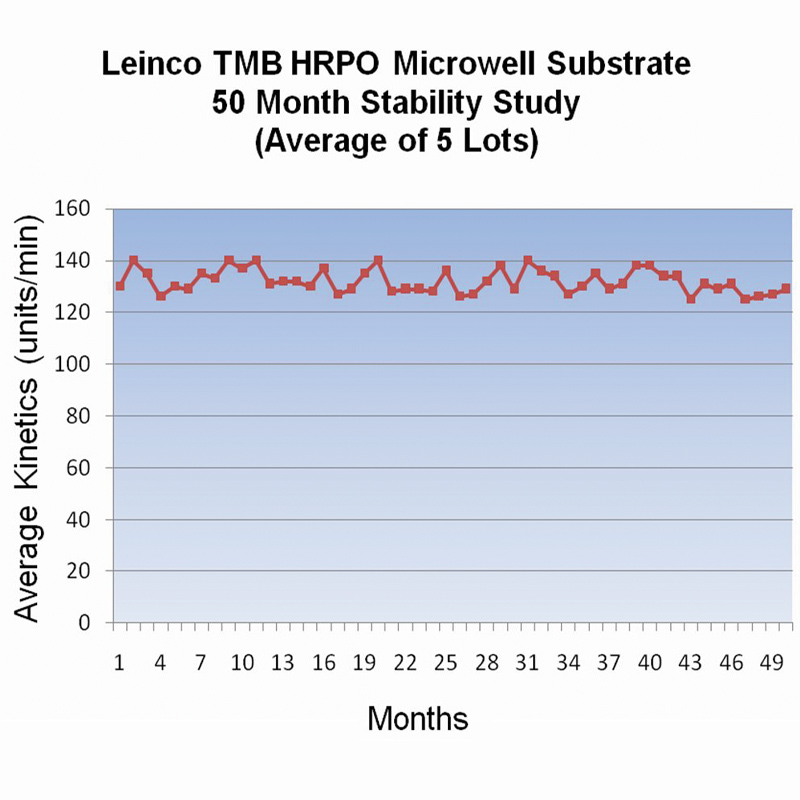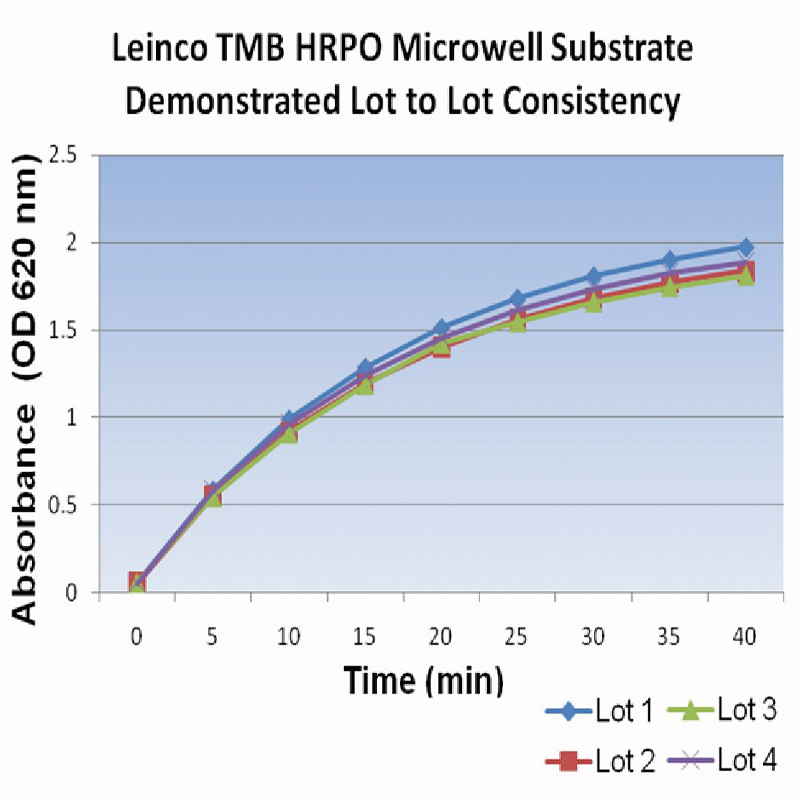TMB Substrate Solution ‘Ready to Use’
Data
- -
- -
Product DetailsStorage and Handling The high quality of the substrate can be preserved by storing at temperatures between 2 – 8ºC. The substrate should not be frozen and should be protected from direct light by storing in amber bottles. Do Not Freeze Expiration Date Do not use this product beyond the stated expiration date on the product label. <br>
<b>Precautions:</b> This product is sensitive to contamination from a variety of oxidizing agents. To avoid contamination and premature expiration, avoid contacting TMB solution with any potential source of contamination, such as metals or silica based materials. Never pipette directly from the bottle. Pour out the required amount onto a tube and pipette from the tube. Only high quality glass and plastic products should be used for storing aliquots. Do not return excess TMB to the primary storage container.
DescriptionBackground TMB Microwell Substrate (3,3’,5,5’ tetramethylbenzidine) is a soluble substrate used with the enzyme horseradish peroxidase (HRPO) designed for various qualitative or quantitative immunoassays but not recommended for membrane or immunohistochemical applications where a precipitating reaction product is required. Initially, the substrate should be colorless or slightly yellow in color and will be stored in a mildly acidic buffer. TMB Microwell Substrate turns a deep blue color when oxidized with hydrogen peroxide catalyzed with horseradish peroxidase labeled conjugates with absorbencies at 370 nm or in a range of 620 nm to 650 nm. The color is changed to a bright yellow if an acidic stop reagent such as HCl or sulfuric acid is used. The absorbance should be read at 450 nm if the reaction is stopped which increases the sensitivity 2-4 fold.
Leinco Technologies’ TMB Microwell Substrates exhibit superior kinetic performance, sensitivity and lot to lot consistency as compared to other vendors. The outstanding shelf life of at least forty eight months for the TMB Microwell Substrate makes this reagent ideal for long term use of the same manufacturing lot. Directions for Use TMB Microwell Substrate is a ready to use solution that needs no preparation or dilution. Pour estimated amount of substrate into a suitable high quality plastic reservoir to avoid contamination of the bulk solution. It is recommended that you allow the substrate solution to equilibrate to room temperature before use. While the TMB solution is equilibrating, wash the microplates thoroughly to remove excess peroxidase labeled conjugates. Washing the plates at least four times is recommended to minimize background noise.
Add 100 μl of substrate solution to each well of a 96 well ELISA plate. Once a soluble blue reaction product develops, the plate can be read at 370 nm or in the range of 620 nm to 650 nm. The absorbance values of the sample should be monitored so that a linear curve can be plotted. For increased sensitivity, add 50 μl of a stop solution such as 1.0 N HCl or 1.0 N sulfuric acid to create a soluble bright yellow reaction product. After stopping the enzymatic reaction the plate should be read at 450 nm. Estimated incubation times for substrate range from 20 to 30 minutes. Troubleshooting
Related Protocols |
Related Products
- -
- -
Prod No. | Description |
|---|---|
T117 | |
T263 | |
M114 | |
A106 | |
H603 | |
R1190 | |
R1215 | |
A128 |
 Products are for research use only. Not for use in diagnostic or therapeutic procedures.
Products are for research use only. Not for use in diagnostic or therapeutic procedures.




